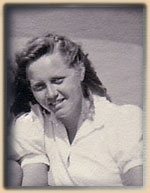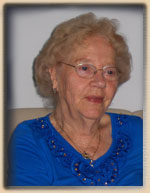Miepie's Discoveryby Dieuwke Talsma Wendelaar BongaWhen I was in the Japanese women's prison camp Sumowono, high in the mountains of Central Java, I found out there were also quite a few of our school friends there from our home town Solo (Surakarta). My Mom, together with seven children, was put on transport to that particular camp a few days after Christmas 1942. We were rounded up by the Japanese occupying army soon after they had entered the town in March 1942. In Sumowono we ended up in long barracks with steel roofs, on eight measured out spaces. It was unbelievably noisy when the tropical rains came down. Women and children, strangers, had to live across from each other. There was a centre aisle and a few side doors allowing us to move around. After we had settled in, we started to see more and more of our old friends and we shared the stories of our capture by the Japanese upon entering the city. My sister Emmie had a school friend Miepie who was also in this camp. Now Miepie had a lot of tight blond hair. It was very frizzy and hard to comb ever since it had started to grow after she was born. Ever since she was a little girl, her Mom had to have her hair trimmed very short. She had no idea how to do that herself and properly shape her child's hair. So every two weeks she used to take her to a hairdresser downtown, where she was a regular customer for years on end. This was necessary as Miepie's hair grew very fast. But in this camp, with nowhere to go, Miepie's hair grew like the dickens and it was hardly possible to run a comb through it. As a 16-year old it was tough having to walk around like that and occasionally her Mom tried to shape it herself, with different results. Miepie was always complaining about her hair After our daily existence in this camp was organized, we used to receive regular orders from the Japanese commandant about the various ways we were supposed to live, clean, cook, behave, etc. This included occasional inspections by what we called hoog bezoek, or VIPs. These visits by Japanese officers were always announced beforehand. Everyone had to clean up frantically, straighten up bunk beds, get rid of things lying around, sweep, which in a way was a good thing. Mothers with little children had a very hard time keeping their small spaces organized. When the officers would arrive, we were ordered to line up alongside our bunks in the centre aisle of the barrack. As there were some ten barracks, it was very difficult to keep the children lined up until the visitors came by. We never knew which building would be visited first. And when they passed, we all — little children included — had to bow deeply in honour of the important visitors. If someone did not bow far enough, she could expect a poke in the stomach or a slap in the face. After these particular visits, we girls always came together in order to discuss how it had gone in our own barrack. After one such visit Miepie came up with an amazing story about what had happened in her lineup. When the Japanese officers entered the barrack, a loud order was yelled: Keirei, which is Japanese for bow. Everyone bowed. You were not supposed to look up. Miepie said she heard the sound of the boots on the concrete floor, and the clinging and rattling of the Samurai swords as the small group of officers passed her and her Mom. But suddenly she heard one of the officers call out: "Hello Miepie!!" She looked up and guess who she saw? It was her Japanese hairdresser from Solo, our hometown, wearing the uniform of a high ranking Japanese officer. But they did not stop and marched on. Of course, she was astonished, as was her Mom. How could a simple hairdresser have obtained such a high rank in the Japanese army within a year of the occupation of Java? When she told us the story, we were all shocked that among us had lived traitors disguised as hairdressers and who knows what else? How many traitors had been living among us before the war and had contributed to the fall of the Dutch East Indies? This discovery made her and all of us, young people, realize that our trust in humanity had been destroyed. That conclusion was confirmed in the following years spent in several more prison camps. And when the liberation came at the end of August 1945, we were not out of the woods yet, because then we were attacked by nationalist extremists. But that is another story. Story copyright © Dieuwke Talsma Wendelaar Bonga, 2005, 2010
All text on this site copyright © 2005, 2010 by Ria Koster, except as otherwise noted. |




